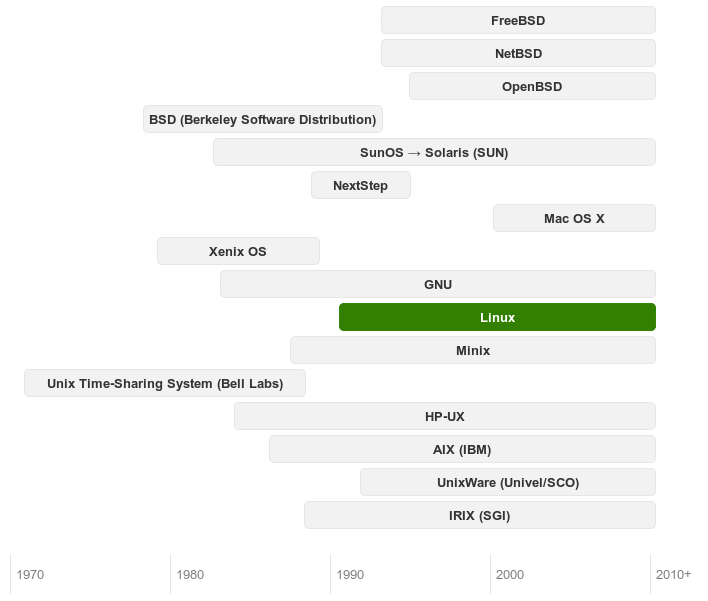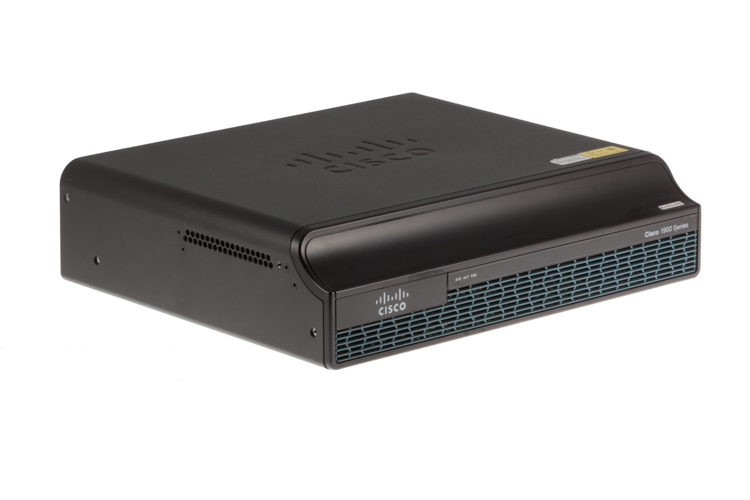Lazy Linux: the history of Slackware
Hello, habr!
My last article was devoted to ancient programming languages and the history of programming in the USSR. It received a great response – I’ll even say more, that article is rated higher than all my other articles!
Today we will study the history of one of the oldest and still living Linux distributions – Slackware.

In the modern computing age, Slackware can be considered an old relic of a long-forgotten past. The old king may have abdicated the throne, but the embers of his former glory still smolder.
But first, I’ll give you a brief excursion into the history of Linux.
History of Linux
The roots of Linux can be traced back to the 70s of the 20th century. The starting point can be considered the appearance of the Unix operating system in 1969 in the USA at Bell Laboratories, a subsidiary of AT&T. Unix became the basis for a large number of industrial operating systems. The most important of them are displayed on this timeline:

Linux owes its life to two projects – GNU and Minix. We’ll talk about this later.
About Patrick – creator of Slackware
It all started in 1973. An ordinary child named Patrick and his class went on an excursion to the computer department of North Dakota State University.
“The room where they kept the machines completely amazed me – a lot of big noisy machines with flickering lights everywhere. And rows of large drives with disk plates. One of the system operators showed me how to play StarTrek on a Dec Writer, a teletypewriter-like terminal. It was an instant addiction.”
Addiction is addiction, and in 1973 computers were large, and the Internet was slow, and neither the student nor his parents could afford to buy a computer. This is what made Patrick become interested in electronics – it was more accessible and no less interesting.
After the publication and appearance on sale of the first personal computers, such as TRS-80, Apple II And Atari 400/800 The shops that sold them became Patrick’s permanent place of residence. The owners allowed him to hang around here and use the cars, and in return they received small programs with advertising for the store or something similar, resulting from Patrick’s study of BASIC.
At the age of 14, Patrick finally acquired a personal PC. It was Apple II Plus with 300 baud modem AppleCat. It had a Unix-like OS installed on it, which didn’t even resemble Linux. At that time these were very popular models. This car served him faithfully until 1990.
Patrick first heard about Linux sometime in late 1992 from a friend named Wes at a party in Fargo, North Dakota. He remembered Linux only when he needed to find a LISP interpreter for a project. This is how one of the distribution versions was downloaded Peter MacDonald SLS.
Within a few weeks, everything that was necessary was fixed in the installed OS, and the professor had a completely logical desire to make sure that during subsequent installations of Linux on machines, the OS would have the same fixes that it has now. This kicked off the project. Patrick corrected the original SLS installation scripts, fixed bugs, and added automatic installation of shared libraries and a kernel image. I edited the description files, making them more informative and generally went through all the software packages, eliminating all the bugs I saw, and ported new versions of the software packages. At the start of work, the future distribution, then just a hack version of SLS, had a kernel of 0.98pl4, and upon completion of the work and handing it over to the professor, it was already 0.99pl9. By that time, Patrick’s SLS build had beaten the original distribution in half the packages, and had made many fixes in the other half. The differences between SLS and Slackware have become more than cosmetic.
In May – June 1993, after adding the C 4.4.1 libraries and the 0.99pl11A kernel to the already own distribution, the system became significantly more stable and work with the network improved. Friends from Minnesota State University persuaded Patrick to put the distribution on FTP, but thinking that a new version of SLS would be released, Patrick waited. Over the past few weeks, many people online have been asking about a new SLS release with bug fixes. Then a letter went online with the subject “Does anyone want an SLS-like 0.99plA system?” And there were a huge number of answers.
Patrick was allowed to create an anonymous FTP on the old 3b2which died down very soon, after ads about the posted archive. Those who managed to download Slackware 1.0 left good reviews online, and the distribution’s reputation was not long in coming. Patrick was offered disk space for ftp.cdrom.com.
And one day the moment came when Peter MacDonald woke up and demanded distribution rights to installation scripts taken from SLS, instead of looking at the example of Slackware to fix SLS, as Volkerding wanted. Patrick completely rewrote the installation scripts for Slackware and after so much work he realized that he was not going to give up.
The name Slackware was suggested by Patrick’s friend JR “Bob” Dobbs. Slack – means lazy, careless, slack, relaxed, lethargic, and also lazy. Many people said that the name had a negative connotation, but Patrick liked the name. What he called Slackware was really a hack version of SLS. He had no intention of making the distribution public. But when I posted it on FTP, I left the name. At first he didn’t want people to take the distribution so seriously.
History of Slackware

So, the SLS distribution is dead. But his soul lived. Even during the period of its active development, Patrick Volkerding adopted SLS as the basis of his Linux system, called Slackware, the first version of which was made public on July 17, 1993 and has since been successfully developed to this day.
It was with Slackware that the history of Linux distribution began in the organizational, so to speak, aspect. Immediately after its appearance, Slackware, in addition to the usual network channels, began to be distributed on CD by the famous media company Walnut Creek.
Slackware inherited the pristine simplicity of SLS in its internal structure. And not only did she inherit it – it was simplicity that Patrick elevated to the fundamental principle of building the system. Its implementation was expressed in the preservation of the BSD initialization style, a simple package format, and an “ideologically determined” refusal to control their dependencies.
The Debian and Red Hat distributions, created a little later (but on the scale of the era – almost simultaneously), followed the exact opposite path: an increasingly complex initialization scheme in the style of System V, the inclusion of the largest possible amount of metainformation in the structure of packages and increasingly sophisticated forms of control over them dependencies.
30 years ago Patrick Volkerding presented first release Slackware Linux distribution, which has influenced many projects and is the oldest existing distribution. The most famous fork of Slackware is SUSE Linux. Among the Slackware modifications that continue to develop, we can note Salix, Slax, Slackel, Porteus, Zenwalk, Slackware Live Edition And Absolute Linux.
The first release of Slackware was based on the Linux kernel 0.99pl10 and built using gcc 2.4.5. The graphical environment was built using XFree-86 1.3 and the Open Look window manager. The heyday of Slackware occurred in 1994-96, during which the distribution occupied a leading position among other systems. For example, Slackware was the first distribution to release releases based on the Linux kernel 1.0 and 2.0 (Debian Buzz with the 2.0 kernel came out a few weeks later, and Red Hat 4.0 was several months behind). Subsequently, projects such as Debian, Red Hat and SUSE supplanted Slackware, but contrary to numerous predictions about the soon oblivion of the project, the distribution is still alive and updated.
The main reason for the distribution’s long life is endless enthusiasm. Patrick Volkerding, who, 30 years later, still remains the leader and main developer of the project. In addition, despite its advanced age, the distribution was able to maintain its originality and simplicity in the organization of work. The lack of complications and a simple initialization system in the style of classic BSD systems make the distribution an interesting solution for studying the operation of Unix-like systems, conducting experiments and getting to know Linux.
Slackware’s innovations were:
• own installation program – menu-oriented, working in pseudo-graphical mode, similar in appearance and related in spirit to the sysinstall utility from FreeBSD, which was created at the same time;
• highlighting the categories of packages – the base system (A), console applications (AP), development tools (D), the X window system and its applications (X and XAP, respectively), and so on;
• a set of utilities for managing individual packages, which does not, however, provide any dependency control.
Time has shown the providentialism of Patrick’s approach – Slackware has been living and developing for 15 years now, without compromising its principles, maintaining a compactness that is rare in these days, only updating kernel versions, components of the base system and applications. There is also a stable circle of users of this distribution.
The initial “primitivism” of the Slackware package format does not prevent the use of highly developed package management tools in this distribution, which provide accounting and automatic resolution of dependencies. Since the packages themselves do not contain any metainformation, any external database can be used to store it.
This feature of the Slackware package format is actively used by everyone who has a desire or need for it, adapting any package management systems to it. So, I heard about successful attempts to use a ports system in Slackware, which was taken from FreeBSD. Slackware supports pkgsrc, a ported system originally developed for NetBSD. Based on the synthesis of Slackware and pkgsrc, several distributions are actively developing, for example, Voltalinux and Draco GNU/Linux.
The apt-get mechanism, which made Debian famous and later contributed greatly to the popularity of the Ubuntu family, was also adapted for use in Slackware: here it was called slapt-get. Based on the synthesis of Slackware and the pacman package manager, which originated from Archlinux (by the way, in many ways the ideological successor of Slackware), the Frugalware distribution arose.
Slackware also developed its own package manager, swaret. However, due to Patrick’s behests, it was never included in the standard package of the distribution kit. Because for Slackware itself, Patrick still recognizes only two as the main means of package management: installation of official binaries using standard utilities, with manual dependency resolution, and compilation from sources – in case the required packages are not in the repository or their official assembly by for one reason or another does not satisfy the user. Everything else is glitchy. That is, this distribution should be considered not so much as a complete system, but as a framework for constructing your own system.
Interesting fact – SUSE Linux was a German translation of Slackware Linux
Debian was based on Slackware
There have always been stories about how in the early days of GNU/Linux there was talk of a merger between Debian and Slackware, but I never knew that Debian was originally based on Slackware.
The man himself, Patrick Volkerding, shared the following piece of computing history on LinuxQuestions.org back in 2017 when responding to a post about how Debian was never based on Slackware:
According to what Ian told me over the phone in 1993, this was some time before it was released, for what that’s worth.
– Volkerdi
For those unfamiliar with the history of Debian, “Ian” refers to the late Ian Murdoch, founder of the Debian project. Alas, Patian GNU/Linux never materialized, and Debian focused on gaining market share at the expense of Slackware Linux.
Website from the 90s

Slackware.com hasn’t been redesigned since 1999, and as far as I can tell, the server side hasn’t changed much either. However, Slackware users don’t mind seeing how the classic HTML table design works seamlessly in the terminal with lynx. Who needs responsive design optimized for mobile devices in 2023, am I right?
To be fair, there were initiatives to give Volkerding a new website for slackware.com, but for some reason he decided to stay on the old site.
And for old facts, I believe the server hosting slackware.com is running Slackware 12.0.
Conclusion
This concludes our excursion into the history of Slackware. Hope you enjoyed it. Leave comments, I’m ready to answer your questions.




